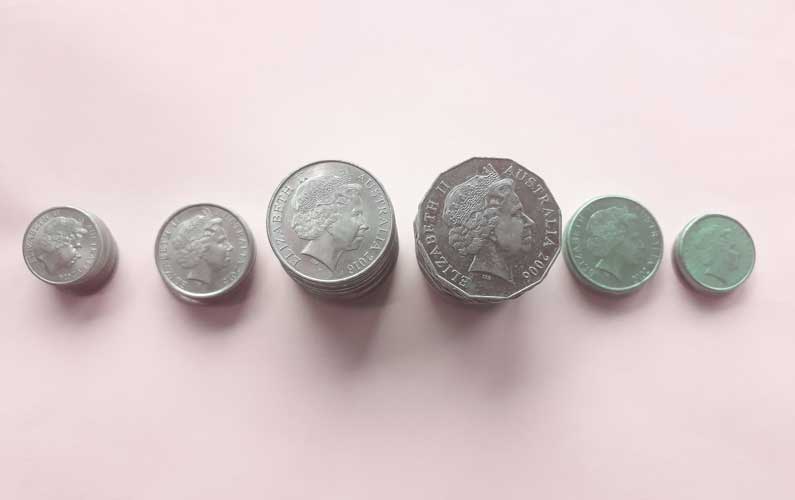In any line of business, knowing your break-even point (BEP) is critical. Contrary to popular belief, it is not just essential knowledge for startups, but for all stages of business.
As a salon owner, this information is essential, as it will assist you in your day-to-day operations, as well as assessing opportunities that may come your way very quickly.
Have you ever wondered what your most profitable service is (It’s not always the most expensive)? Or how many new recurring clients you need to attract to hire another staff member/do those renovations? Knowing your BEP and monitoring it closely helps you keep your finger on the pulse of your business, without having to sit down and wade through reports every time.
What is a Break Even Point?
Google “Break Even Point” and you will find a lot of confusing information about complicated formulas for calculating the BEP, and different margins and ratios for assessing business research. This is because BEP is used by investors a lot, to assess the viability of a business prior to investing money or buying shares.
While fascinating reading for financial types, it can make a quite simple concept appear extremely confusing to small business owners (very common in my industry, and a HUGE bugbear of mine, but we will come back to that another time).
Simply put, your break even point takes into account ALL fixed and variable costs associated with providing your product/service, and calculates how many sales you need to make each day/week/month/year before you make a profit.
How is it calculated?
The formula for calculating your BEP is Sales = Fixed Costs + Variable Costs.
Sales is pretty obvious, the total amount of income received.
Fixed Costs refer to those costs that do not fluctuate depending on how many customers you have, and are therefore fixed.
Eg: Rent, Insurance, Electricity, etc.
Variable Costs include expenses that rise, the more customers you service.
Eg: Products, Consumables, Wages
Steps to calculate your BEP:
In this example, I will assume you are currently in business and have a month’s worth of financial data to look at and use for calculation. If you are in the planning or start-up stages, please feel free to contact me for specific information regarding projecting costs and sales.
You can also, for more accurate numbers, use an entire year’s worth of data, and then break down to the time period of your choice at the end. This is preferable, as the numbers will reflect seasonality, but can be more time-consuming.
If you have a good computerised accounting system, you should be able to find this information fairly quickly, if not, using your Profit & Loss Statement from your previous years’ financials will suffice. It is important to remember when running such calculations, the more up-to-date your data is, the more accurate outcome results.
1. Grab two pieces of paper, and write down all of your Fixed Costs on one, and all of your Variable Costs on another. Include a value for each which is comparable when thinking about time. (For example, if I pay electricity quarterly, but insurances monthly, I would need to break down the electricity costs by dividing it by 3).
2. Now, grab your appointment book, or run a report from your software for the same period, which shows total sales amount, and total customers serviced. If you use a book, simply count up how many appointments you have had over the past month.
Don’t be too concerned over differentiating between retail sales and service sales at this point, we can delve deeper into that area later. Using the steps outlined here will simply apportion the retail sales across your clients, which is usually pretty close to accurate anyway.
3. Divide the total Sales amount by the number of appointments. This will give you your Average Sale per Customer.
4. Total all of your Fixed and Variable costs for the same month, then divide by the Average Sale Per Customer amount.
5. This is the total amount of customers you need to service each month to break even.
Do I include my wages?
I see so many salon owners not including their own pay when completing a financial analysis of their business. More than any other industry, actually!
Remember, any reports or financial analysis of your business should show the realistic position of your business. Imagine you were looking to buy a salon, if the numbers showed a profit, but assumed you would work 40-50 hours for free each week, is it really a profit? Would you want to buy that business?
What now?
The above is a very simplified example of calculating your BEP, and should assist with getting your head around the number portion. Once we have this initial information, we can use it to assist in many ways. Calculating the FC and VC portion of each different service would be beneficial also, as then we can have a look at our most profitable services when deciding on marketing strategies and upselling.
It also helps to have a rough goal. If you know you need 60 appointments per month to break even, and midway through the month, you realise there has only been 20 so far, it can give us that little mental push needed to contact clients, put a facebook post up, or something else to stimulate bookings, rather than getting to the end of the month having done nothing.
Go to www.baspro.com.au/freeconsult to register for your free 30 minute phone consultation with April. As a special offer for SalonSavy friends, we are offering a 50% discount on BEP calculations. Have your calculations completed and receive a report on your salon for just $55.00.
About April
 April Scott is Principal Director of BasPro, she is a qualified accounting professional, and practices as a BAS Agent, bookkeeper and software consultant.
April Scott is Principal Director of BasPro, she is a qualified accounting professional, and practices as a BAS Agent, bookkeeper and software consultant.
She is passionate about assisting small business owners to simplify and automate the information flowing through their business to assist with compliance, and providing information to assist in achieving their business goals.
BasPro offers fixed fee affordable Bookkeeping, BAS, Payroll and Software packages. Find out more at www.baspro.com.au

